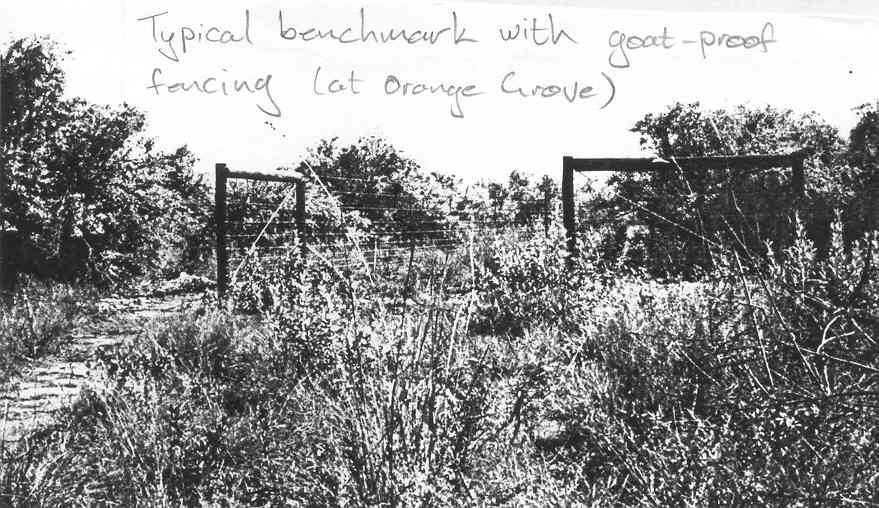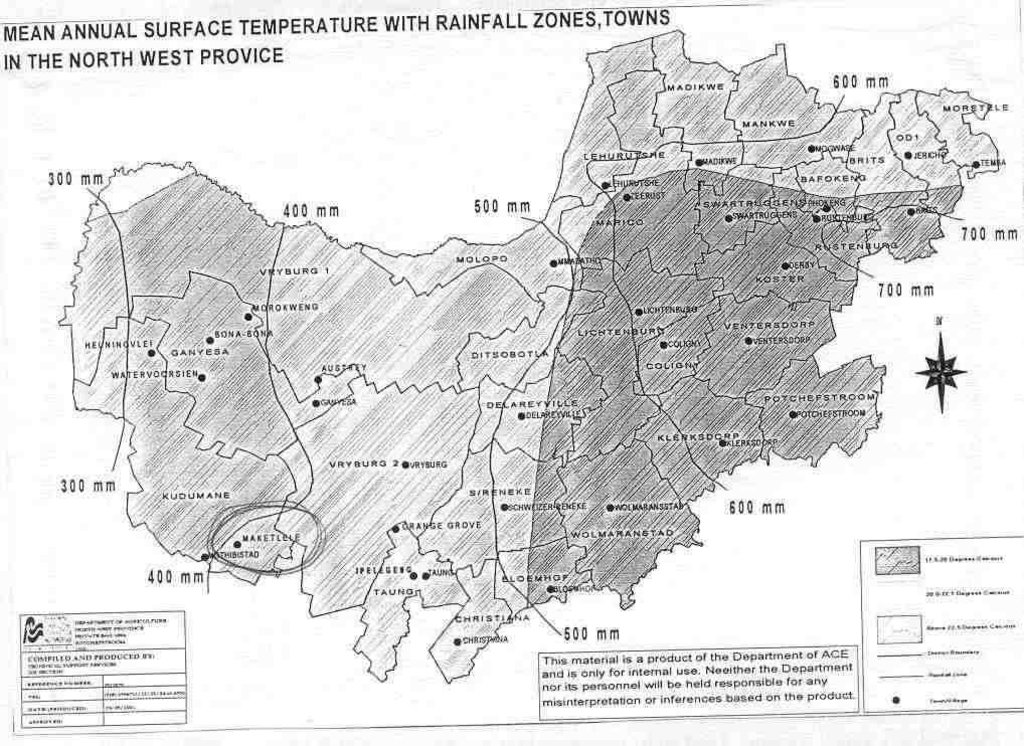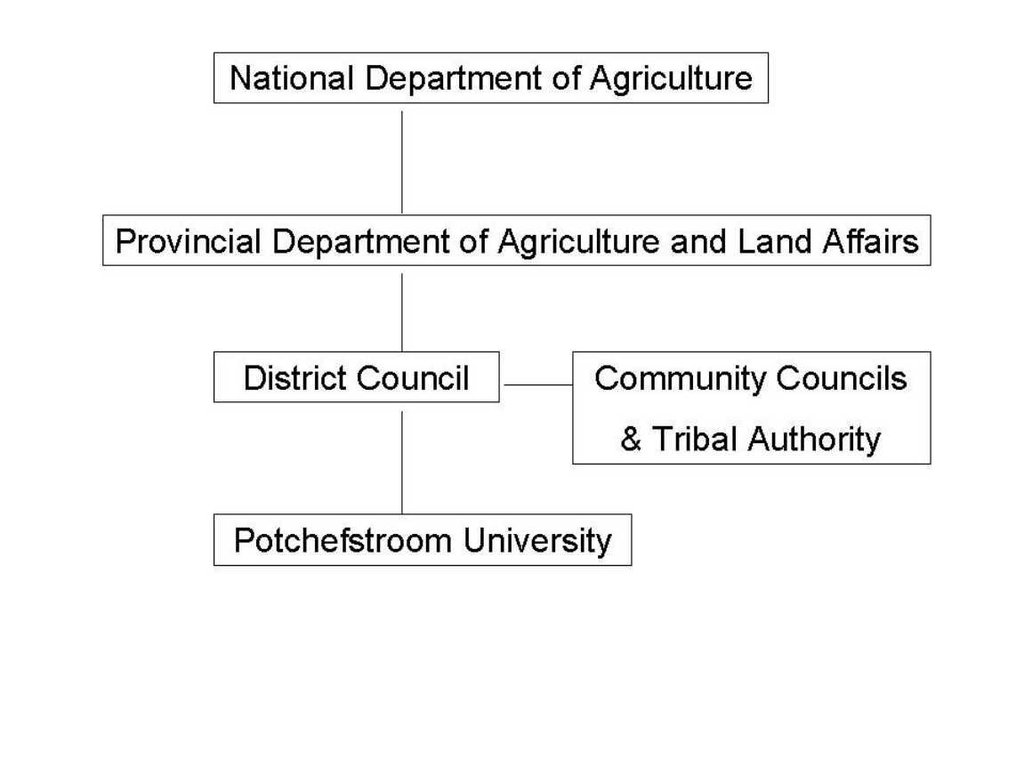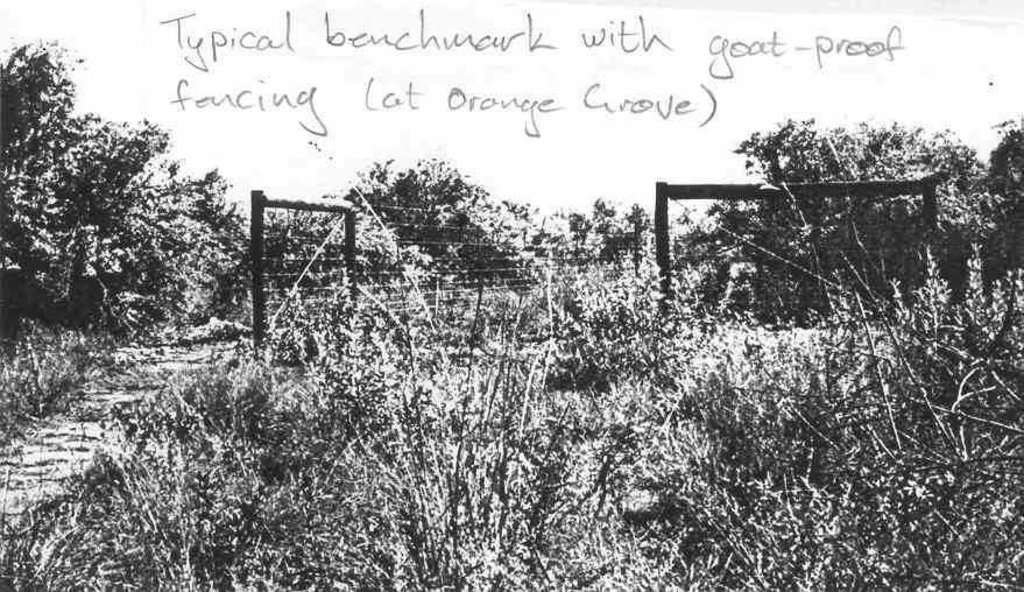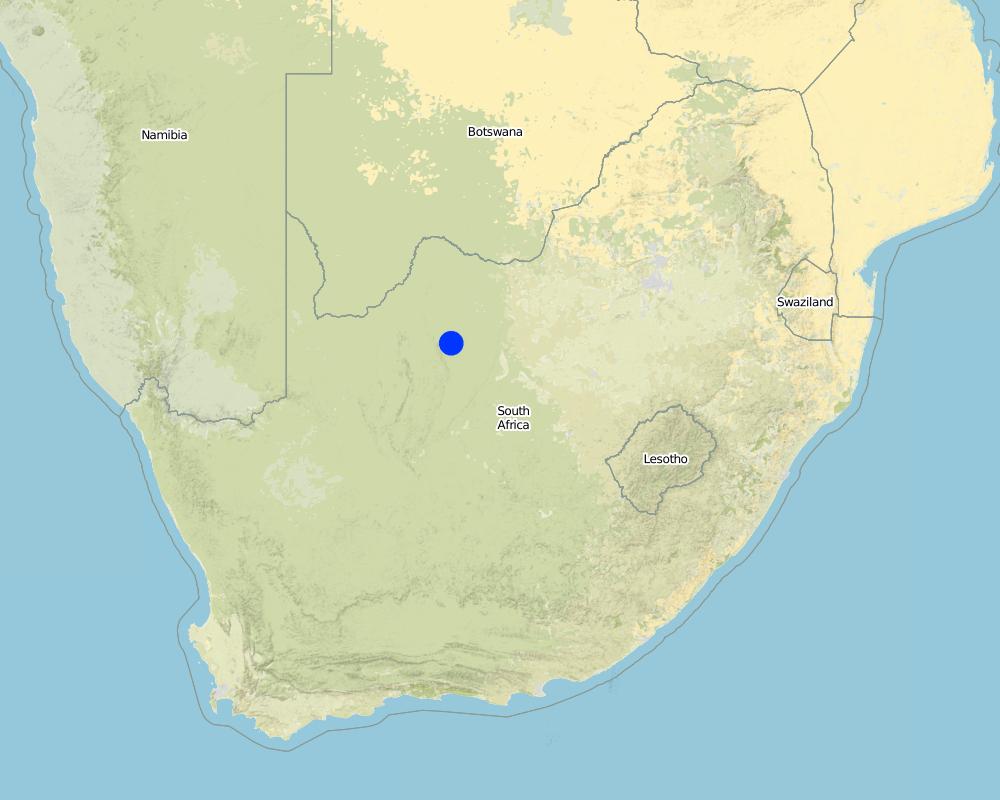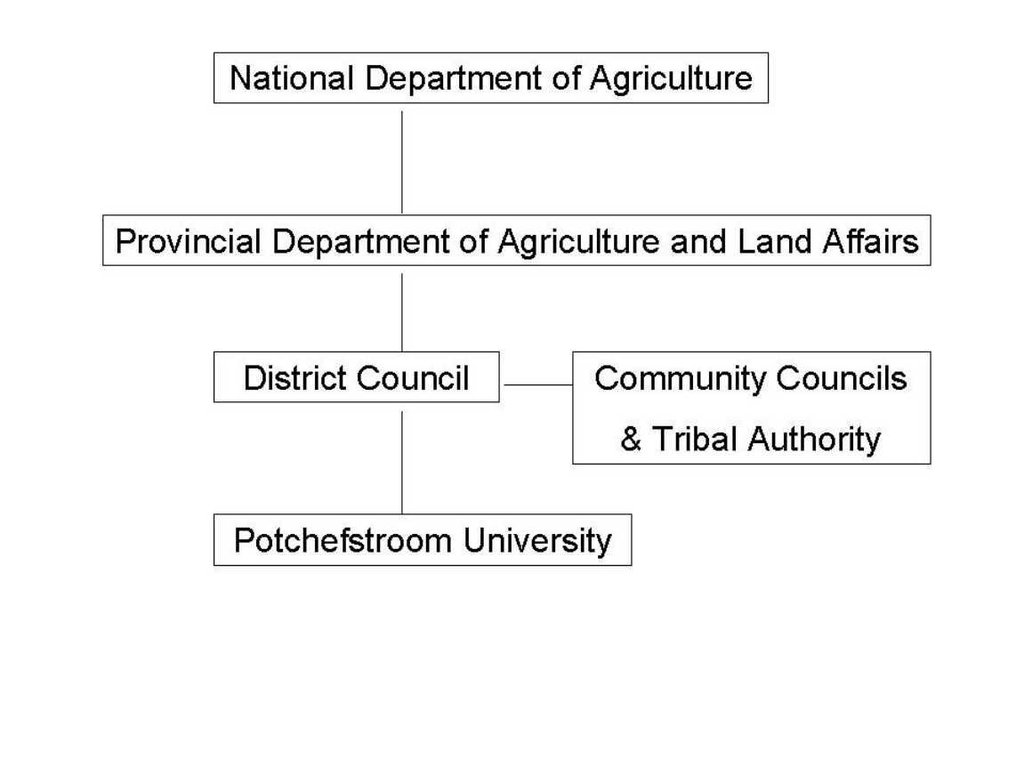Communal stakeholders [South Africa]
- Creation:
- Update:
- Compiler: Anja Jansen van Vuuren
- Editor: –
- Reviewer: Fabian Ottiger
approaches_2339 - South Africa
View sections
Expand all Collapse all1. General information
1.2 Contact details of resource persons and institutions involved in the assessment and documentation of the Approach
SLM specialist:
Name of the institution(s) which facilitated the documentation/ evaluation of the Approach (if relevant)
Potchefstroom Universiteit vir CHO (Potchefstroom Universiteit vir CHO) - South Africa1.3 Conditions regarding the use of data documented through WOCAT
The compiler and key resource person(s) accept the conditions regarding the use of data documented through WOCAT:
Yes
1.4 Reference(s) to Questionnaire(s) on SLM Technologies
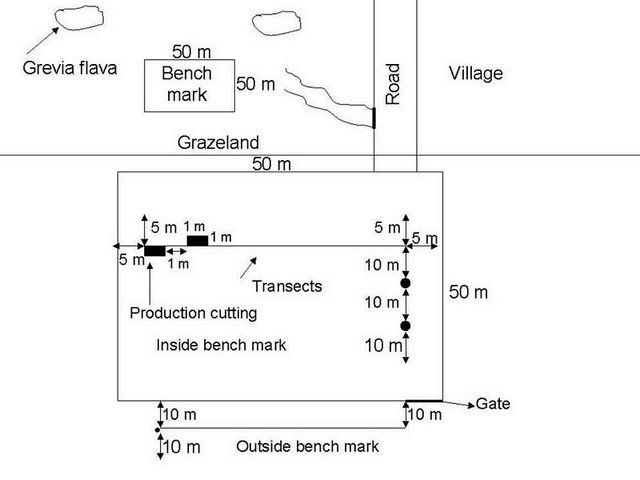
Communal grazing management [South Africa]
Rangeland management of communal grazing land, to improve grazing capacity by applying rotation.
- Compiler: Anja Jansen van Vuuren
2. Description of the SLM Approach
2.1 Short description of the Approach
Government funded project aimed at rangeland management to enhance natural recourse management. The community being the key stake holders.
2.2 Detailed description of the Approach
Detailed description of the Approach:
Aims / objectives: The community was approached to show where the benchmarks should be erected. The whole community was informed about the project and how they would benefit from it. Benchmarks were erected by the community, thus creating jobs. Initial surveys were conducted so that later comparison in production and species composition could be made after further surveys. The rotational approach was introduced in a communal system.
2.3 Photos of the Approach
2.5 Country/ region/ locations where the Approach has been applied
Country:
South Africa
Region/ State/ Province:
North West Province
Map
×2.6 Dates of initiation and termination of the Approach
Indicate year of initiation:
1998
2.7 Type of Approach
- project/ programme based
2.8 Main aims/ objectives of the Approach
The Approach focused mainly on SLM with other activities (Cattle improvement. Veld management strategies have been learned. Survey skills learned.)
On-site technology application. Seeing is believing. Community participation. Empowerment of the community to better their own situation. Job creation, community-based natural resource management. Promoting partnerships between public, community and private sectors.
The SLM Approach addressed the following problems: Degraded rangelands, thus insufficient grazing for the cattle.
2.9 Conditions enabling or hindering implementation of the Technology/ Technologies applied under the Approach
availability/ access to financial resources and services
- hindering
Availability of government funds.
Treatment through the SLM Approach:
institutional setting
- hindering
Communication between parties.
Treatment through the SLM Approach: More structured and organised meetings.
legal framework (land tenure, land and water use rights)
- enabling
The existing land ownership, land use rights / water rights greatly helped the approach implementation: The chiefs favoured the approach.
knowledge about SLM, access to technical support
- hindering
Lack of community participation during surveys.
Treatment through the SLM Approach: Make a big issue about environmental awareness.
3. Participation and roles of stakeholders involved
3.1 Stakeholders involved in the Approach and their roles
- local land users/ local communities
Participation
Specific ethnic groups: Twana people but only men. The community was asked where the benchmarks should be situated.
- national government (planners, decision-makers)
Funding
- international organization
Basic framework
If several stakeholders were involved, indicate lead agency:
The approach - international specialists. The South African approach and application - national specialists. Specification of sites - land users.
3.2 Involvement of local land users/ local communities in the different phases of the Approach
| Involvement of local land users/ local communities | Specify who was involved and describe activities | |
|---|---|---|
| initiation/ motivation | passive | workshops/seminars, public meetings; Training for surveys was provided. |
| planning | passive | orkshops/seminars; Training |
| implementation | interactive | responsibility for minor steps; Should apply the rotation. |
| monitoring/ evaluation | interactive | measurements/observations; Help with monitoring. |
| Research | interactive | on-farm; Benchmarks was erected. |
3.3 Flow chart (if available)
3.4 Decision-making on the selection of SLM Technology/ Technologies
Specify who decided on the selection of the Technology/ Technologies to be implemented:
- mainly SLM specialists, following consultation with land users
Explain:
land user driven (bottom-up).
Decisions on the method of implementing the SLM Technology were made by mainly by SLM specialists with consultation of land users. consultative. The land user did not have the knowledge.
4. Technical support, capacity building, and knowledge management
4.1 Capacity building/ training
Was training provided to land users/ other stakeholders?
Yes
Specify who was trained:
- land users
- SWC specialists, extensionists/trainers
Form of training:
- farmer-to-farmer
- demonstration areas
- public meetings
Subjects covered:
Ecological principles, NRM principals.
4.2 Advisory service
Do land users have access to an advisory service?
Yes
Describe/ comments:
Name of method used for advisory service: Demonstration; Key elements: Benchmark sites, Learning by doing; 1) Mainly: government's existing extension system, Partly: non-governmental agency. Extension staff: mainly government employees 3) Target groups for extension: land users, technicians/SWC specialists; Activities: Public demonstrations
Advisory service is inadequate to ensure the continuation of land conservation activities; Monitoring does not persist if some one is not doing it with them.
4.3 Institution strengthening (organizational development)
Have institutions been established or strengthened through the Approach?
- yes, a little
Specify the level(s) at which institutions have been strengthened or established:
- local
Specify type of support:
- capacity building/ training
4.4 Monitoring and evaluation
Is monitoring and evaluation part of the Approach?
Yes
Comments:
bio-physical aspects were regular monitored through measurements
socio-cultural aspects were ad hoc monitored through observations
economic / production aspects were ad hoc monitored through observations
area treated aspects were regular monitored through measurements
no. of land users involved aspects were regular monitored through measurements
management of Approach aspects were regular monitored through measurements
There were no changes in the Approach as a result of monitoring and evaluation
4.5 Research
Was research part of the Approach?
Yes
Specify topics:
- ecology
Give further details and indicate who did the research:
Vegetation, NRM, production monitoring, soil composition, on-site application.
Research was carried out on-farm
5. Financing and external material support
5.1 Annual budget for the SLM component of the Approach
If precise annual budget is not known, indicate range:
- 10,000-100,000
Comments (e.g. main sources of funding/ major donors):
Approach costs were met by the following donors: government (national - Department of Agriculture): 80.0%; national non-government (University): 20.0%
5.2 Financial/ material support provided to land users
Did land users receive financial/ material support for implementing the Technology/ Technologies?
Yes
5.3 Subsidies for specific inputs (including labour)
If labour by land users was a substantial input, was it:
- paid in cash
Comments:
Job creation incentive.
5.4 Credit
Was credit provided under the Approach for SLM activities?
No
6. Impact analysis and concluding statements
6.1 Impacts of the Approach
Did the Approach help land users to implement and maintain SLM Technologies?
- No
- Yes, little
- Yes, moderately
- Yes, greatly
Rotational grazing system was adopted.
Did other land users / projects adopt the Approach?
- No
- Yes, little
- Yes, moderately
- Yes, greatly
Other regions in North West Province are following the example.
6.3 Sustainability of Approach activities
Can the land users sustain what has been implemented through the Approach (without external support)?
- yes
If yes, describe how:
Extension officers learned from the specialists.
6.4 Strengths/ advantages of the Approach
| Strengths/ advantages/ opportunities in the land user’s view |
|---|
| Better grazing. (How to sustain/ enhance this strength: Keep to the rules of rotational grazing. Keep cattle out of resting velds.) |
| Specialists help. (How to sustain/ enhance this strength: The specialists made surveys easy. Assist in erecting.) |
| Strengths/ advantages/ opportunities in the compiler’s or other key resource person’s view |
|---|
| The committed ADC manager. (How to sustain/ enhance this strength: Keep him motivated through communication.) |
| LandCare. (How to sustain/ enhance this strength: he buzz words were introduced and community was made aware of the environment.) |
| Interaction between different cultures. (How to sustain/ enhance this strength: Specialists and communities were introduced to one another.) |
6.5 Weaknesses/ disadvantages of the Approach and ways of overcoming them
| Weaknesses/ disadvantages/ risks in the land user’s view | How can they be overcome? |
|---|---|
| Specialists are very remote. | Not always reachable. |
| Reduction of cattle numbers. | Resistant to reducing wealth. |
| Weaknesses/ disadvantages/ risks in the compiler’s or other key resource person’s view | How can they be overcome? |
|---|---|
| Linguistic abilities not sufficient. | Learn to speak Tswana. |
| Times delays. | The sites are a bit remote and the people only drive during working hours. |
| NRM application should be sustainable. | Not only based on incentives, but the benefits should be realised. |
7. References and links
7.1 Methods/ sources of information
- field visits, field surveys
- interviews with land users
Links and modules
Expand all Collapse allLinks

Communal grazing management [South Africa]
Rangeland management of communal grazing land, to improve grazing capacity by applying rotation.
- Compiler: Anja Jansen van Vuuren
Modules
No modules


